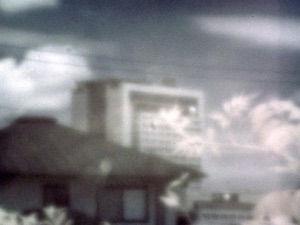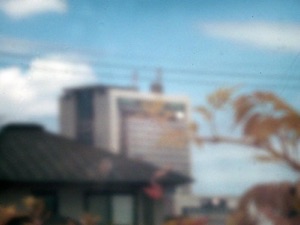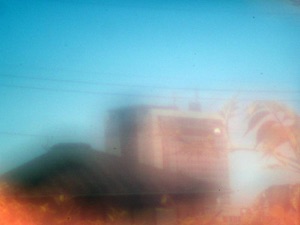Atelier Bonryu(E)
infrared photography


Atelier Bonryu(E)
infrared photography


Laboratory: Infrared Photography
Lensless Infrared Photography
4-2 Practice of Lensless Infrared Photography




Pinhole Infrared Photography: Though we can start this moment to take “a zone plate infrared photograph” as described in the previous page, we try at first to take “a pinhole infrared photograph” before taking a zone plate infrared photograph. In the case of the pinhole photography, unlike the zone plate photography, the plate is made of a metallic sheet as an alminum sheet, which clears completely the first one of the previously described problems (zones opaque to the visible light is completely opaque to the infrared light, too) . A pinhole of the diameter of 0.30 mm is mounted a camera body of a full spectrum converted Olympus OM-D E-M5 . The distance from the pinhole to the image screen is made variable around 110 mm, which is nearly optimum for the infrared light with the wavelength of 800 nm. The optimum diameter of a pinhole for the above distance (110 mm) and the light with the wavelength of 550 nm is about 0.25 mm. However, because in the case of a pinhole this difference should not be considered seriously, the same pinhole set at the same distance from the image screen can be used for photographing a visible photograph and an infrared photograph.
Figure 4-3 is a pinhole infrared photograph of the building of the Ibaraki prefectural office (IR70 filter, ISO=1600, exposure time=1/13 sec). This photograph is post-processed by the tone inversion method in the CIELab color space. Figure 4-4 is a pinhole visible light photograph of the same object as above


Fig.4-3 The Ibaraki prefectural office building (A pinhole infrared photograph)
Pinhole diameter=0.3 mm, Distance between the pinhole and image screen=110 mm, Filter:IR70, Exposure time=0.002 sec, ISO=200, Camera: Olympus OM-d E-M5 (full spectrum)
Fig.4-4 The Ibaraki prefectural office building (A pinhole visible light photograph)
Pinhole diameter=0.3 mm, Distance between the pinhole and image screen=110 mm, Filter:--, Exposure time=0.0008 sec, ISO=200, Camera: Olympus OM-d E-M5 (full spectrum)
Zone Plate Infrared Photography: We took a zone plate infrared photograph by using a zone plate (focal length=150 mm, number of zones=33) for the wavelength of 550 nm (Fig.4-5). As described in the previous page it may be appropriate to consider the wavelength of the photographed infrared light is 800 nm whereas the wavelength of the visible light photography is 550 nm which is the central wavelength of the range of the visible light. Then, the focal length of this zone plate is 103 mm for the infrared photography (wavelength =800 nm). In practice we took the photograph by using the zone plate set at 90 - 120 mm from the image screen and an infrared filter IR70 mounted Olympus OM-D E-M5. For the sake of comparison a zone plate visible light photograph of the same object was taken. In this case we used a zone plate with the focal length of 100 mm and the zone number of 39 for the wavelength of 550 nm.


Fig.4-5 The Ibaraki prefectural office building (A zone plate infrared photograph)
The focal length for the wavelength of 550 nm is 150 mm (103 mm for the wavelength 0f 800 nm). The zone plate is placed at 110 mm from the image plane. Camera: Olympus OM-D E-M5 (full spectrum), Filter: IR70, Exposure time: 0.01 sec, ISO: 1000.
Fig.4-6 The Ibaraki prefectural office building (A zone plate visible light photograph)
The focal length for the wavelength of 550 nm is 150 mm. The zone plate is placed at 100 mm from the image plane. Camera: Olympus OM-D E-M5 (full spectrum), Filter: --, Exposure time: 0.008 sec, ISO: 400.
For reference conventional infrared and visible light photographs taken by using a lens are shown in Figs.4-7 and 4-8.


Fig.4-7 The Ibaraki prefectural office building (An infrared photograph taken by a camera with a lens)
Camera: Olympus OM-D E-M5 (full spectrum), Lens: Zuiko Digital 12-50 3,5-6.3, Filter: IR70, Exposure time: 0.002 sec, ISO: 200.
Fig.4-8 The Ibaraki prefectural office building (A visible light photograph taken by a camera with a lens)
Camera: Olympus OM-D E-M5 (full spectrum), Lens: Zuiko Digital 12-50 3,5-6.3, Filter:--, Exposure time: 0.0008 sec, ISO: 200.
